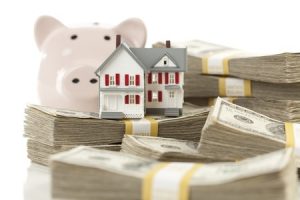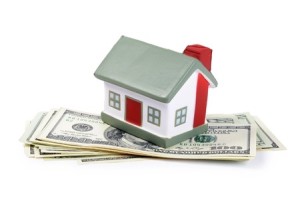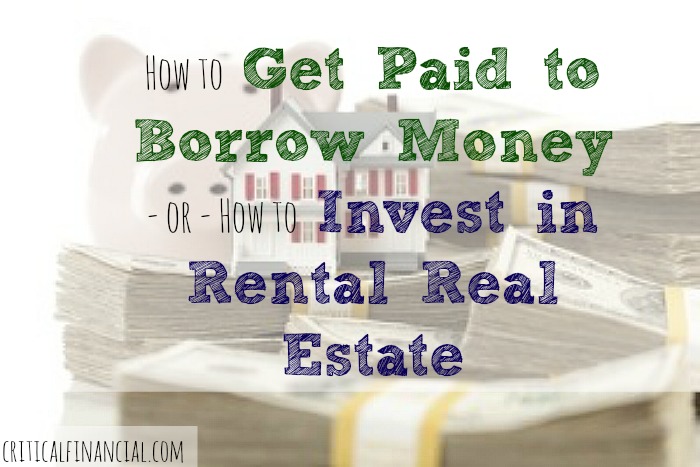 written by Kevin Mercadante.
written by Kevin Mercadante.
There is a feature to investing in real estate that is not found in virtually any other type of investment asset. When you buy rental real estate, you’re getting paid to borrow money. No, it’s not quite as simple as all that, but that’s basically the end result. That can make rental real estate one of the very best investments you can own.
Using Other People’s Money, or OPM
If you’ve read many investment books, you probably know the abbreviation OPM – or Other People’s Money. Nowhere does that work better than in rental real estate. You’re putting up a relatively small fraction of the purchase price of a property, and financing the rest with a mortgage.
Getting a mortgage to buy rental real estate is not as easy as it was before the financial crisis. Back then you could buy a rental property with no more than 10% down – and sometimes as little as 5% – and be on your way. Today, you’ll most likely need to come up with a minimum of 20%. But that means that the remaining 80% will still be financed through OPM.
That means that you will have leverage that will increase the return on your actual cash equity by many times over the years that you own the property. If you buy the right rental property, that leverage will not only provide you with a positive monthly cash flow, but should ultimately see the value of the investment rise over many years.
Your tenants pay your mortgage
The great aspect of using borrowed money to pay for most of the purchase price of rental real estate is that your tenants pay your mortgage for you. If you buy the property right, the rental income from the property should at least cover the basic house payment. If it does, your mortgage will be paid by your tenants, not by you.
Over time, the mortgage balance will amortize, which means you’ll be increasing your equity in the property – even if it doesn’t rise in value. But as it does, you’ll be seeing an increase in equity from two directions, from the pay down of the mortgage, and from the rise in property value.
But there’s even more. Once your mortgage is paid off, the rent you collect from the property over and above property taxes, insurance, and repairs and maintenance, will be pure profit to you. The basic mortgage payment will be gone, and all of the money that once went to cover that expense will arrive in your pocket.
Think of the retirement potential from that kind of investment.
Why rental real estate may be a better investment than other assets
Real estate may be a better investment than most other assets. This is true because there are three possible ways you can make money:
- From the rents on the property (if they exceed the house payment)
- From the pay down of the mortgage – increasing equity
- From the rise in the value of the property – again, increasing equity
Still another advantage is that, unlike stocks, real estate is unlikely to drop in value all the way to zero, or even anywhere close to it. Since the investment is a real asset, it will always have value. Paper investments by contrast, represent a claim on assets, and they can drop to zero if that claim is substantially impaired.
What to look for when buying rental real estate
 Of course, we’re not talking about how to get rich quick in real estate here. Your ability to invest in rental real estate profitably will have everything to do with how you go about it. The days of being able to buy a single family house nearly anywhere in the country, and the flip it five years later for a 50% profit, is now mostly a fantasy.
Of course, we’re not talking about how to get rich quick in real estate here. Your ability to invest in rental real estate profitably will have everything to do with how you go about it. The days of being able to buy a single family house nearly anywhere in the country, and the flip it five years later for a 50% profit, is now mostly a fantasy.
It’s a matter of going back to the fundamentals of real estate investment, the way seasoned real estate investors have always done it. If you’re going to invest in rental real estate, be aware of the following:
Watch your local market. Any successful real estate investor knows that there are some markets worth buying into, and others that are best avoided. Much as you would with stocks, you should look for areas that are not only cheap in relation to the surrounding areas, but also have great potential for future price increases. That could mean looking for an area that is experiencing a substantial amount of renewal. You’ll need to get into such a market early in the process (while it’s still a bargain), and avoid it entirely if renewal has run its course (evidenced by top end prices).
Know the rental market. Rent income is the lifeblood of rental real estate investing. For this reason, you need to know the rental market – in addition to the purchase market. That means knowing what apartments will rent for, and how strong the local rental market is. Check into local vacancy rates – appraisers can help you with this. If vacancy rates are in the single digits, it’s probably a solid rental market. But if it’s much above 10%, there’s probably a shortage of potential tenants. They’re all kinds of reasons for this, including overbuilding, the closing of one or more large employers in the area, or a general regional economic decline.
Real estate is a cash hungry investment. You should expect that you will need a down payment of at least 20% of the purchase price of the property. You should also have a substantial cash cushion after you buy the property. You’ll need this money to perform necessary repairs of the property, to market rental units, and to cover your monthly payment until the property is fully rented.
The property must be self-sustaining. The money in real estate investing is no longer in buying and flipping properties. You have to think in terms of buy-and-hold. That being the case, the rental income on the property should be sufficient not only to cover the basic house payment, but also to provide extra for tenant vacancy, repair and maintenance, and also a return on your investment. That means that if you put $30,000 down on a $150,000 property, you’re going to have to factor in a satisfactory rate of return on the down payment. If that arrangement is in working order, you’ll make money on the property even if the value remains flat. That will also give you a margin that you’ll need to survive any downturns in the market.
The property must be structurally sound. There are all kinds of real estate investment books that recommend you buy a property that needs cosmetic improvements. For example, buying a property at a discount because the lawn is two feet high, and the house is in desperate need of a fresh paint job. That’s fair enough, but you have to be very careful of cosmetic deficiencies that hide serious structural problems. Repainting a house is one thing, rewiring it is a problem of a much greater dimension. If you want to invest in rental real estate, you should have a basic idea of the structural issues that could affect a building. And even then, you should always get a home inspection from a qualified professional. A second pair of eyes never hurts.
Taking all of these into consideration, buying the right property in the right area, could turn out to be the best investment you ever make.
To wrap this up, if you are reading this because you are consider making money in real estate or want to make money in real estate, you definitely need to get a copy of William Nickersons’ How I Turned $1,000 into Five Million in Real Estate in My Spare Time
. Its a first rate and comprehensive strategy guide on how small investors can make a serious amount of money without a great deal of time and effort. Its been in print since the 60s and has helped tens of thousands of people make their fortunes in real estate.

James Hendrickson is an internet entrepreneur, blogging junky, hunter and personal finance geek. When he’s not lurking in coffee shops in Portland, Oregon, you’ll find him in the Pacific Northwest’s great outdoors. James has a masters degree in Sociology from the University of Maryland at College Park and a Bachelors degree on Sociology from Earlham College. He loves individual stocks, bonds and precious metals.


